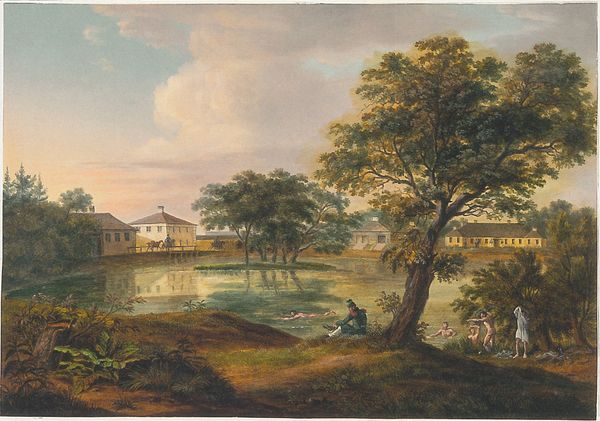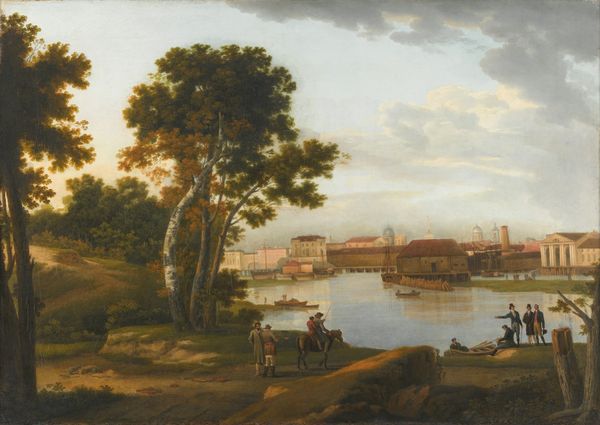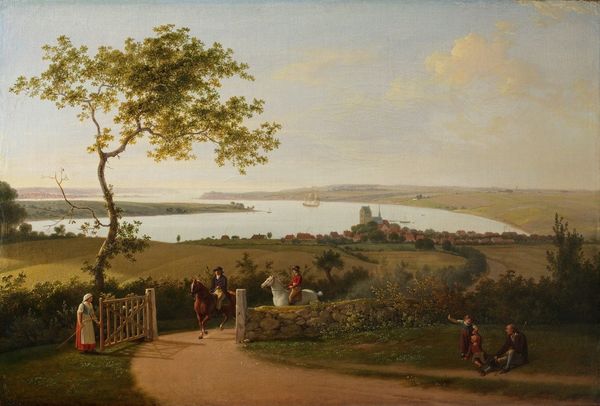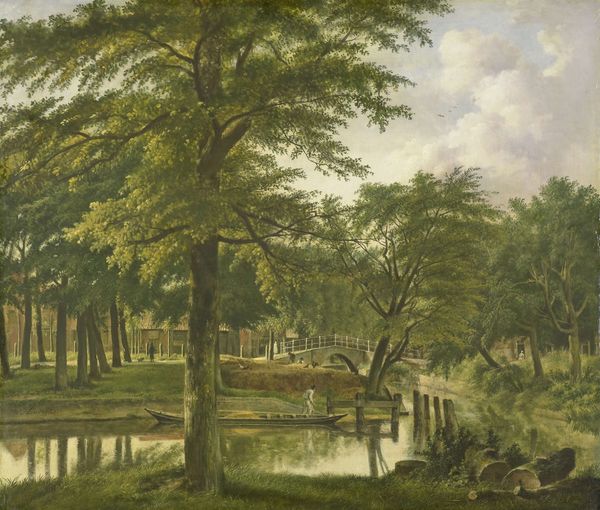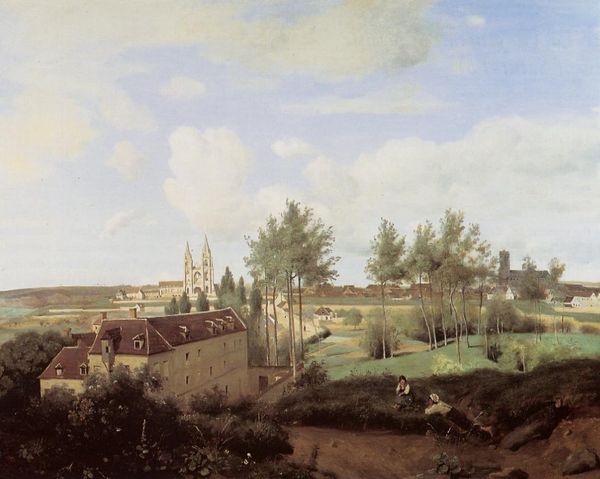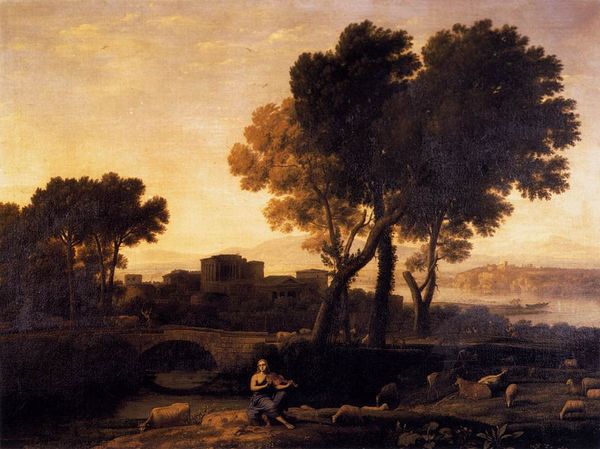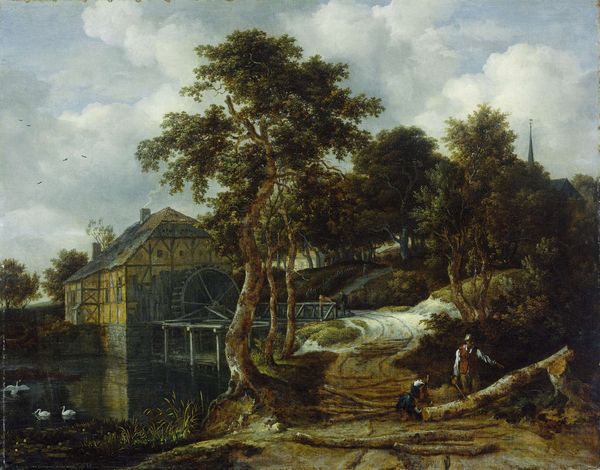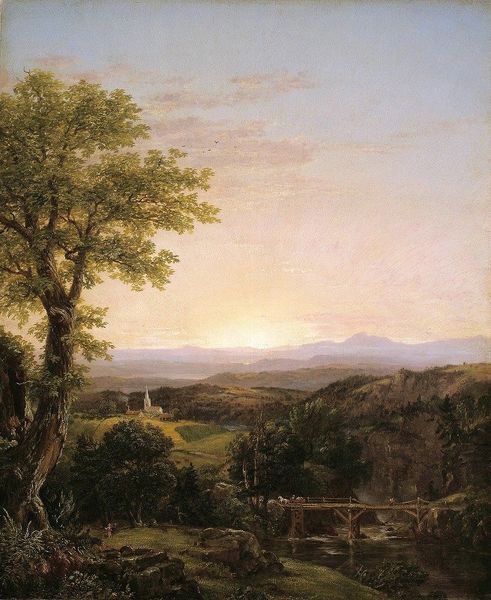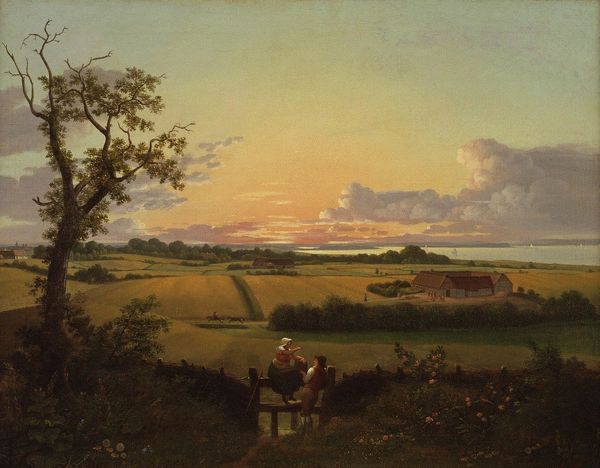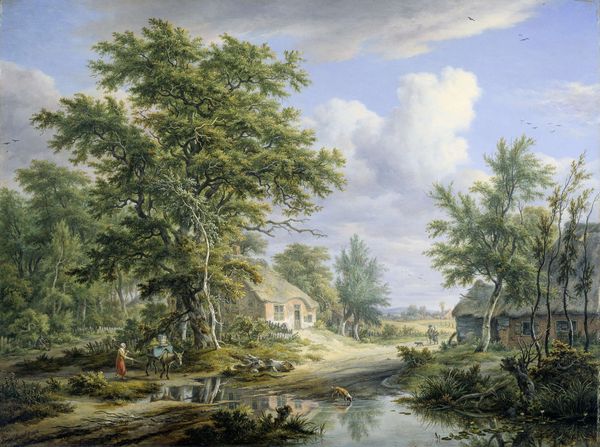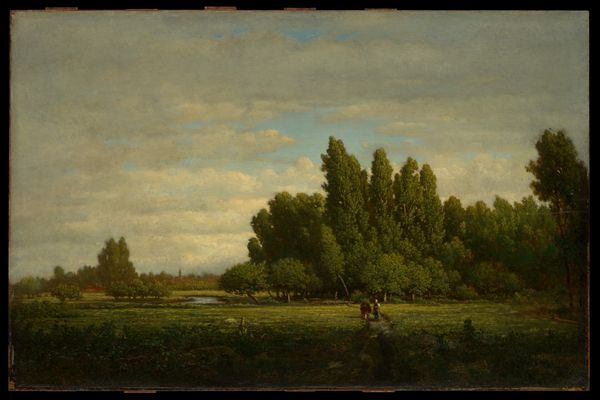
painting, plein-air, oil-paint
#
painting
#
plein-air
#
oil-paint
#
landscape
#
oil painting
#
romanticism
#
cityscape
#
genre-painting
Dimensions: 68 x 95.5 cm
Copyright: Public domain
Curator: Sylvester Shchedrin painted "View from Petrovsky Island in St Petersburg" in 1816. He rendered this cityscape with oil paints using a plein-air technique. Editor: It's a charmingly pastoral scene, really. The palette is muted, but there's a clarity of light that lends a certain tranquility. I am drawn to the materiality of that light and the methods by which the pigments translate it onto the canvas. Curator: Absolutely. But Shchedrin's cityscapes weren't mere picturesque views. This piece, created just after the Napoleonic Wars, reflects a yearning for stability and order within a society grappling with immense social and political change. How does the labor used to produce oil paints play into it? The materials, as you know, signify the class? Editor: Yes, indeed. Consider how the oil paint itself became a tool of bourgeois expression, where the value and permanence of this artwork were embedded into it and accessible to all. Look at the painstaking detail given to the architecture in the distance. How do those wooden planks across the pond reflect the availability of materials versus labor? Curator: And note the figures on the bridge, seemingly unburdened, enjoying a leisurely stroll. The composition idealizes this burgeoning bourgeois class, subtly normalizing their prominence. Their position is central. Editor: True, and the perspective cleverly centers them, reinforcing this idea of ownership. You bring up interesting class analyses with the romanticist ideal: who benefits from the image itself, and how does it portray leisure or ownership through this artistic craft? The figures themselves may appear carefree, but I wonder how the materiality of the canvas might imply otherwise through these artistic choices of light or space. Curator: A beautiful observation on how Shchedrin frames an intersectional snapshot, reflecting an era of transition and the changing societal landscape in Russia, don't you think? Editor: I concur; by considering production and material conditions we can understand how painting itself embodies the changing tides of both artistry and society, thus unveiling those tensions present in Russia during the Romantic Era.
Comments
No comments
Be the first to comment and join the conversation on the ultimate creative platform.
